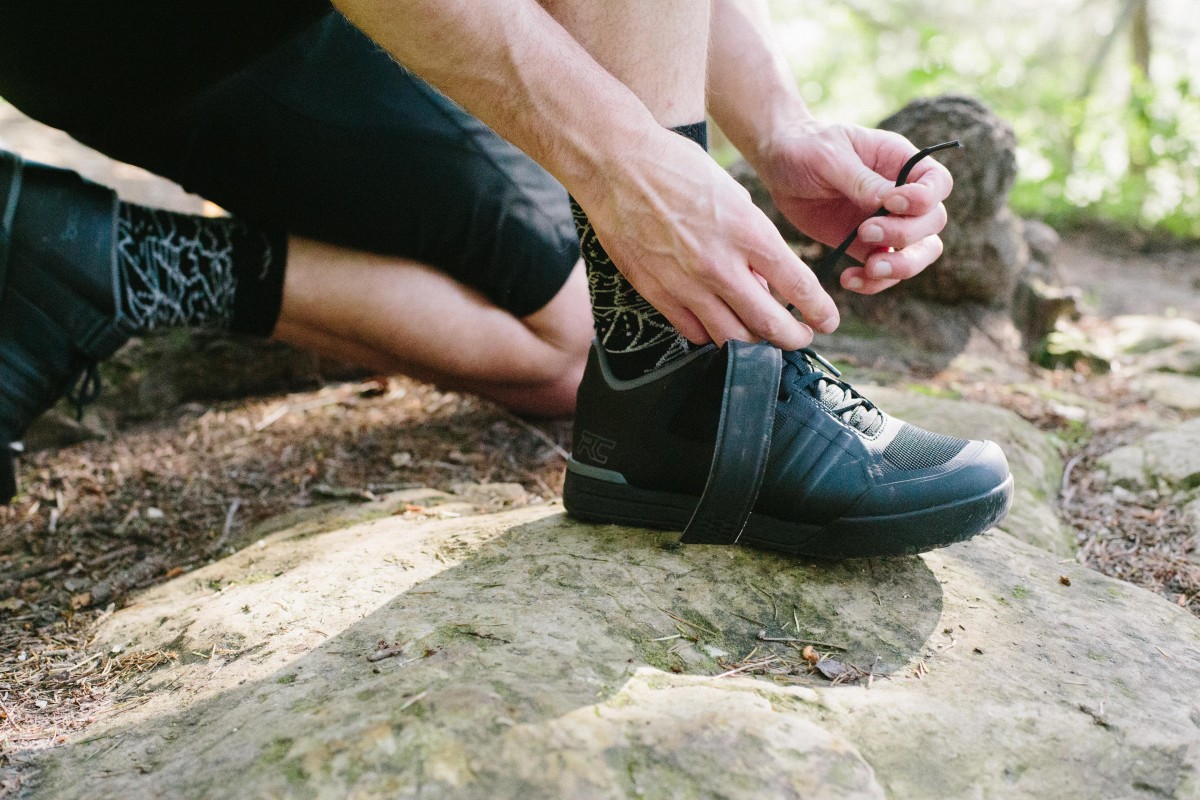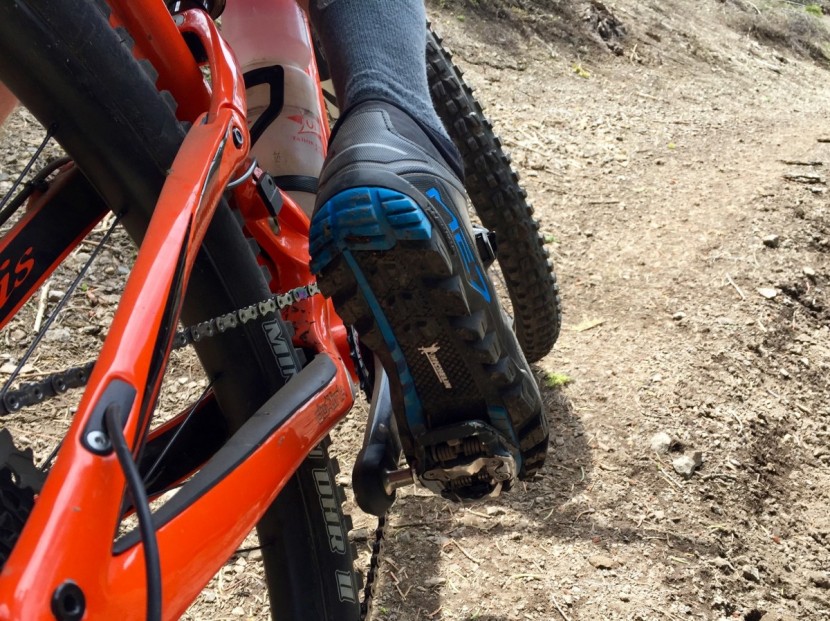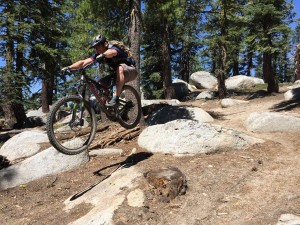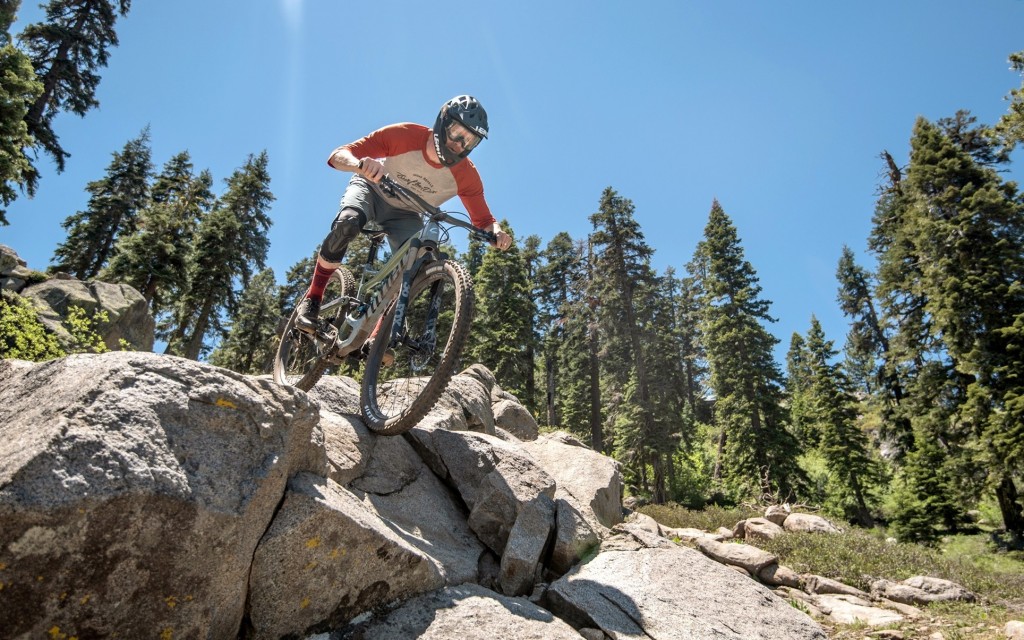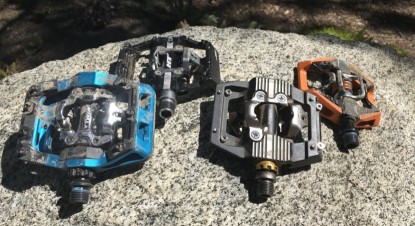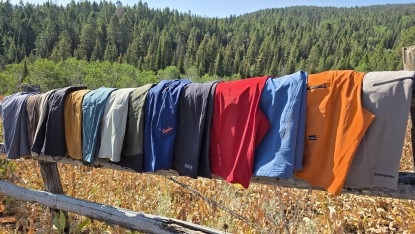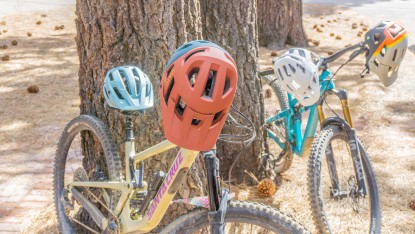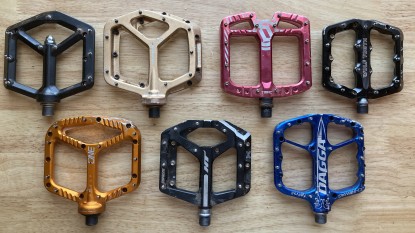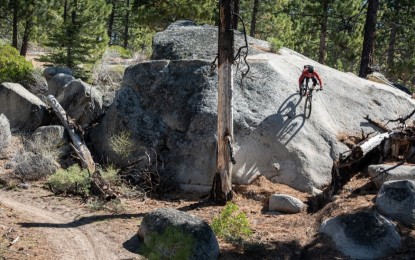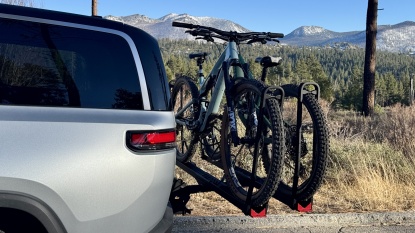There's a lot to consider when looking for a new pair of clipless mountain biking shoes. Most brands these days offer a specific shoe for just about everything. If you're strictly a night-riding hill climb specialist who only rides pre-Millenium single speeds in cargo shorts, we're pretty sure there's a shoe out there marketed directly at you, but what if you're looking for a shoe that does a little bit of everything? What is the difference, really, between a cross-country shoe, a downhill shoe, an enduro shoe, a trail shoe, and a gravel shoe? Ten years ago, half of those categories didn't even exist. We're here to guide you through the complex world of bike-industry marketing, and help you find which shoes are—well—the best; the best for your style, your riding, and your budget. Not sure why or if you need clipless shoes? We'll sort that out for you too.
If you already know you want clipless MTB shoes and know what kind, but you don't know which one, head over to our best mountain bike shoe review. We tested the top models on the market for several months to help you make a more informed decision.
Do You Need Mountain Bike Specific Shoes?
Why should you get shoes specific to mountain biking? Of course, you can ride a bike in just about anything, and many people do. There are, however, a few good reasons to get shoes made for the task. Think of it like having the right tool for the job. Indeed, you can pound a nail into the wall with the head of a crescent wrench, but isn't it so much easier to use a hammer? Mountain bike shoes are made to pair with specific types of pedals, offer foot protection, and have stiff soles that enhance your power transfer and reduce fatigue.
There are two types of mountain-bike-specific shoes, those made for use with flat pedals and those made for use with clipless pedals. Please note that the information presented here is unique to clipless mountain bike shoes.
The term clipless is entirely backward and utterly confusing since it refers to shoes and pedals that clip together. To explain the term, we'll give you a brief cycling history lesson. In the early days of both road and mountain biking, pedals had a cage and strap on the front that your toes would fit into, known as a toe clip. The toe clip was designed to keep your foot from slipping forward while also securing the foot for greater pedaling efficiency. As time went on, in the early 1990's Shimano's SPD (Shimano Pedaling Dynamics) pedal became the first “clipless” mountain bike pedal to take the market by storm. These new pedals were referred to as clipless because they no longer featured the toe clip. As a result, today, we're stuck with a nonsensical name for a fantastic technology.
There are many benefits to using clipless mountain bike shoes and pedals. The soles of clipless mountain bikes shoes are designed to mount a cleat under the ball of the foot. This cleat is what clips into your mountain bike pedal and ensures that your foot is always in the optimal spot for the most efficient energy transfer, assuming they are set up correctly. In addition to proper foot positioning, most clipless mountain bike shoes also have stiff soles to transfer as much of your energy and power as possible directly into your pedals. Since your shoes connect to the pedals, you get more power out of each pedal stroke as your feet can push down and pull up on the pedals with each rotation. The right pedal and shoe combination will also give many riders an enhanced feeling of stability and control because you connect to the bike through the pedals. It becomes easier to manipulate the bike's position, bunny hop, or pull the back end of the bike up and over obstacles while using clipless pedals.
You've probably heard horror stories of friends toppling over or crashing while trying clipless pedals for the first time, and as with anything in mountain biking, there is a learning curve. We all go through it and eventually come out the other side enlightened. Clipless pedals take a little getting used to, but it doesn't take long until clipping in and out becomes second nature.
Types of Clipless Mountain Bike Shoes
Traditionally, mountain biking shoes have varied widely to meet the demands of various riding and trail styles. Today's shoes are more versatile and capable than ever before. Below we briefly describe the primary types of mountain biking shoes.
Cross-Country Mountain Bike Shoes
Cross-country shoes are typically designed with a fully rigid sole to provide maximum power transfer. They typically feature minimalist, lightweight designs.
Trail and All Mountain Shoes
All-Mountain and Trail riding are terms that are often used to mean roughly the same thing. Long days on the bike in the mountains call for a lot of climbing and descending, but most folks still focus on the descent.
Enduro Mountain Bike Shoes
Enduro racing has grown exponentially in recent years, driving innovation in bicycle technology and spawning an entirely new breed of mountain bike shoes. Enduro riding is fast-paced downhill riding where you typically earn your descents by pedaling uphill. In general, enduro riding is much more focused on the descent than the climb, and riders are often willing to pay a weight penalty for a shoe that offers a bit more foot protection than a cross-country shoe provides. Some riders may opt for full-on gravity shoes while others will choose somewhat lighter weight options that offer excellent performance but slightly less foot protection than their downhill counterparts. The Five Ten Kestrel Pro Boa is a good example of an enduro shoe.
Downhill Mountain Bike Shoes
Gravity-oriented mountain biking has been growing in popularity for years. Mountain bike parks, lift-served trails, and shuttle runs are in with the downhill crowd. Downhill oriented shoes such as the Giro Chamber II and the Five Ten Hellcat Pro are designed to provide a solid pedaling platform while maintaining a high degree of foot protection and walkability. They work best with pedals that have a large platform. Gravity shoes usually weigh more due to their beefier construction and enhanced foot protection.
Choosing a Mountain Bike Shoe
The mountain bike shoe you choose should be based primarily on the riding you do or intend to do. Do you like long rides where you earn your descents or enter the occasional cross-country mountain bike race? If so, then a cross-country or lighter-weight trail shoe is probably right for you. Do you mix it up, going for trail rides, occasionally shuttling, and often find yourself in adventurous terrain where you're off the bike frequently? If that's your style, then trail, enduro, or all-mountain shoes are probably what you want to be wearing. If you live for gravity and spend less time going up the hill than down, then you'll probably be happiest with a gravity oriented shoe for enduro or downhill. There are plenty of shoes available today that are versatile enough to span a few or even all of these categories.

